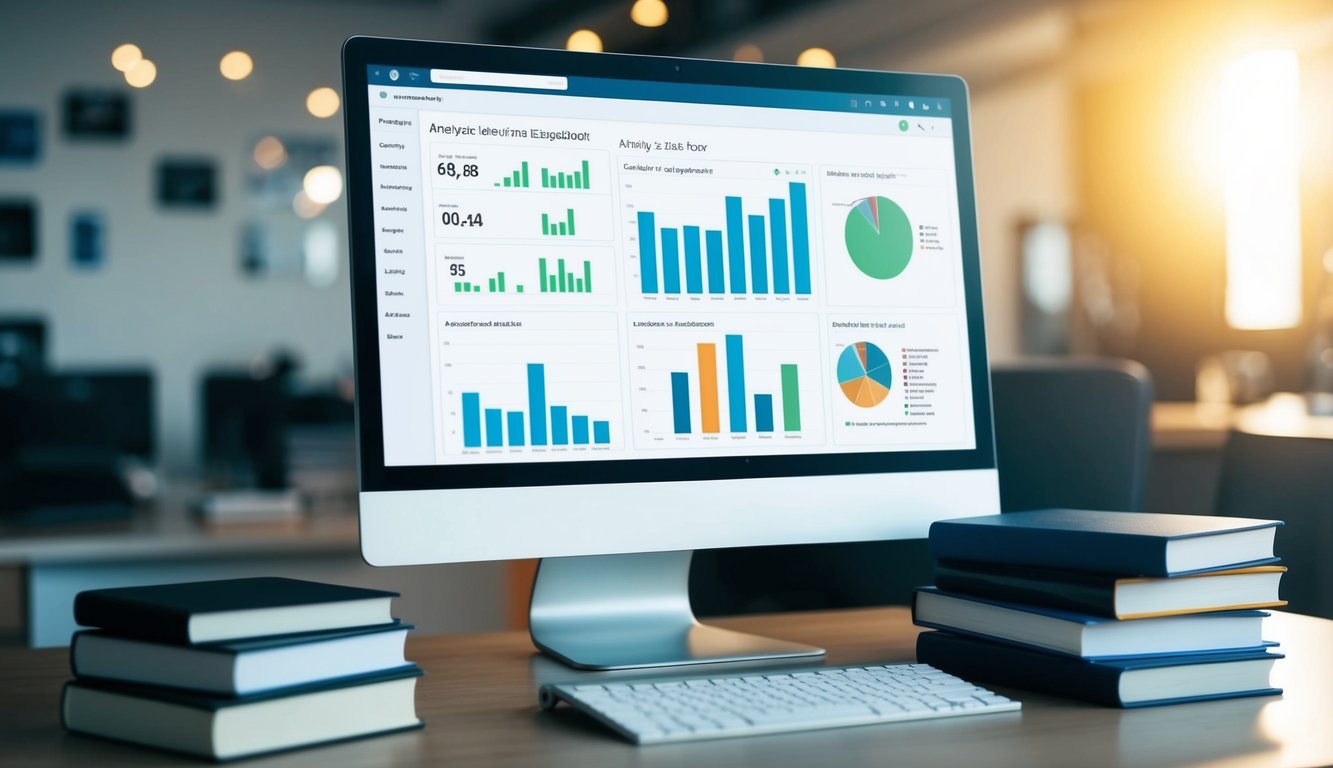The Importance of Search Engine Bots
Ever wondered why some websites seem to magically appear at the top of search results while others languish in obscurity? The secret lies in the tireless work of search engine bots. These digital crawlers are the unsung heroes of the internet, constantly exploring and indexing web pages to determine their relevance and value.

Search engine bots play a crucial role in determining your website’s visibility and ranking in search results. By understanding how these bots operate, you can optimize your site to improve its chances of being discovered and ranked favorably. This isn’t just about throwing keywords around haphazardly; it’s about creating a seamless experience for both users and bots alike.
You might think you’re crafting content for human eyes only, but remember: bots are your first audience. They’re the gatekeepers deciding whether your site is worthy of being shown to potential visitors. By optimizing the crawling process, you’re essentially rolling out the red carpet for these digital VIPs, inviting them to index more of your content and potentially boosting your SEO performance.
Key Takeaways
- Search engine bots are essential for website visibility and ranking in search results
- Optimizing your site for bot crawling can significantly improve your SEO performance
- Understanding bot behavior helps create a better experience for both bots and users
Understanding Search Engine Bots
Search engine bots are the invisible workhorses that make the internet searchable. They tirelessly scour websites, gathering information to help users find what they’re looking for.
How Search Engine Bots Work
Ever wonder how Google knows about your latest blog post? Enter search engine bots. These digital detectives crawl the web, following links and discovering new content. They’re like the ultimate speed readers, scanning pages in milliseconds.
Bots analyze everything from text to images, gathering data to understand what your site is about. They’re not just skimming the surface – they’re diving deep into your content.
Think of them as very picky guests. They love clean, well-structured sites and can get frustrated by slow loading times or confusing navigation. Keep your digital home tidy, and these bots will be your best friends.
The Role of Crawling and Indexing
Crawling and indexing are the dynamic duo of search engine functionality. Crawling is like a bot’s grocery shopping trip – they’re out there gathering all the ingredients (your web pages) needed for a delicious search result.
Indexing is what happens after the shopping trip. Bots organize all that information into a massive, searchable database. It’s like creating the world’s biggest library catalog, but for the internet.
Your job? Make sure your site is crawl-friendly. Use a clear site structure, create a sitemap, and avoid those pesky broken links. The easier you make it for bots to crawl, the better your chances of ranking well.
Key Differences Between Various Search Engine Bots
Not all bots are created equal. Google’s bots, for instance, are like the overachievers of the bot world. They’re constantly evolving, using AI and machine learning to understand context and relevance better than ever before.
Bing’s bots, while not as famous, are no slouches either. They pay special attention to multimedia content, so if your site is image or video-heavy, don’t ignore them.
Some bots specialize in specific types of content. News bots, for example, are always on the lookout for fresh, timely information. If you’re running a news site, these are the bots you want to impress.
Remember, each bot has its own personality. Treat them well, and they’ll return the favor by boosting your visibility in search results.
The Impact of Search Engine Bots on SEO
Search engine bots play a crucial role in determining your website’s visibility and ranking. Their behavior directly influences how well your site performs in search results.
How Bots Affect Website Ranking
You might think your website looks great, but if search engine bots can’t navigate it, you’re in for a rude awakening. These digital crawlers are the gatekeepers of your online presence. They explore and index websites, determining which pages are worthy of appearing in search results.
The more efficiently bots can crawl your site, the better your chances of ranking well. They analyze factors like:
- Content quality and relevance
- Site structure and navigation
- Page load speed
- Mobile-friendliness
If bots can’t access your content, neither can potential customers. It’s like throwing a party and forgetting to send out invitations.
Common SEO Mistakes Related to Bots
You’d be surprised how many website owners unknowingly sabotage their SEO efforts. Here are some bot-related blunders to avoid:
- Blocking bots with robots.txt: Sure, you might want to keep certain pages private, but accidentally blocking important content is an SEO disaster.
- Slow loading times: Bots have a limited crawl budget. If your site takes ages to load, they might give up and move on.
- Broken links: Nothing frustrates bots (and users) more than clicking on a link that leads nowhere.
- Duplicate content: Bots get confused when they encounter multiple pages with the same content. It’s like trying to decide which twin is which.
The Importance of Bot-Friendly Website Design
Designing a bot-friendly website isn’t just about pleasing algorithms – it’s about creating a better user experience. When you optimize for crawling, you’re also improving your site’s overall performance.
Key elements of bot-friendly design include:
- Clear site structure with logical navigation
- XML sitemaps to guide bots through your content
- Descriptive meta tags and header tags
- Fast-loading pages with optimized images
By catering to bots, you’re indirectly catering to your human visitors. After all, what’s good for the bot is often good for the user. So, roll out the red carpet for these digital visitors – your SEO will thank you.
Optimizing Your Website for Search Engine Bots
Search engine bots are the key to your website’s visibility. By optimizing your site for these digital crawlers, you can boost your rankings and get more eyeballs on your content.
Best Practices for Enhancing Bot Interaction
Want to roll out the red carpet for search engine bots? Start by creating a clear site structure. Think of it as giving bots a roadmap to your content.
Use internal linking to connect related pages. This helps bots understand your site’s hierarchy and discover new content.
Keep your URLs clean and descriptive. “yourdomain.com/best-seo-tips” beats “yourdomain.com/page123” any day of the week.
Don’t forget your robots.txt file. It’s like leaving instructions for bots on what to index and what to skip.
Lastly, submit an XML sitemap. It’s basically handing bots a VIP pass to all your important pages.
Technical SEO Tips for Better Crawling and Indexing
Let’s get technical, shall we? First up, optimize your site’s crawlability. This means ensuring bots can easily navigate and understand your site structure.
Speed up your site. Bots, like users, have no patience for slow-loading pages. Compress images, leverage browser caching, and minimize code to give your site a speed boost.
Make your site mobile-friendly. With mobile-first indexing, Google’s bots are judging your site based on its mobile version.
Use schema markup to help bots understand your content better. It’s like giving them cliff notes for your website.
Secure your site with HTTPS. It’s not just about security – Google gives a slight ranking boost to secure sites.
Content Strategies to Improve Bot Engagement
Content is king, but it needs to be bot-friendly too. Start by creating high-quality, original content. Bots can sniff out duplicate content faster than you can say “plagiarism.”
Use descriptive, keyword-rich titles and headers. They’re like signposts for bots, helping them understand what each page is about.
Optimize your meta descriptions. While they don’t directly impact rankings, they can improve click-through rates from search results.
Keep your content fresh and updated. Bots love websites that are alive and kicking, not digital ghost towns.
Don’t forget about images. Use descriptive file names and alt text to help bots understand what your images are about.
Tools and Resources for Monitoring Bot Activity

Keeping tabs on those pesky search engine bots crawling your site is crucial for your SEO success. Let’s explore some handy tools and methods to track and analyze bot activity, so you can optimize your site like a pro.
Popular Tools for Tracking Search Engine Bots
Want to know who’s been snooping around your website? These tools have got you covered. Google Search Console is your go-to for monitoring Googlebot activity. It shows you which pages bots are crawling and how often.
For a broader view, try log file analyzers like Screaming Frog Log File Analyser or Botify Log Analyser. They’ll break down all bot visits, not just Google’s.
Feeling fancy? Bot analytics tools like Netacea offer advanced features to distinguish between good bots and bad actors. They’ll show you:
- Types of bot traffic (scrapers, search engines, marketing bots)
- Countries of origin
- CAPTCHA pass rates
How to Analyze Bot Activity Data
You’ve got the data, now what?
Start by looking at crawl frequency. Are bots visiting your important pages often enough?
If not, it’s time to tweak your internal linking.
Next, check for pages bots can’t access.
These could be hiding behind login walls or buried too deep in your site structure.
Pay attention to crawl budget allocation. Are bots wasting time on unimportant pages?
Consider using robots.txt to guide them to your money-makers.
Don’t forget to compare bot activity with your sitemap.
Any discrepancies? Time to investigate why certain pages are being ignored.
Using Insights to Improve Your SEO Strategy
Now for the fun part – turning those insights into SEO gold.
Notice bots struggling with page load times? Speed up your site pronto. Slow pages can hurt your rankings faster than you can say “algorithm update.”
Spot any orphaned pages bots aren’t finding?
Create internal links to give them some love. The more accessible your content, the better your chances of ranking.
Use crawl data to prioritize your content strategy.
Pages getting lots of bot attention? They’re probably important to search engines. Double down on optimizing and updating these gems.
Lastly, keep an eye out for any weird bot behavior.
Sudden spikes in activity could signal a potential attack. Stay vigilant and protect your site’s performance.
Conclusion

Search engine bots are the unsung heroes of your website’s visibility. Without them, your carefully crafted content might as well be invisible.
You’ve learned how these digital detectives crawl through your site, uncovering every nook and cranny. They’re like the ultimate party guests, checking out every room in your digital house.
But remember, these bots aren’t mind readers. You need to make their job easy. Optimize your website for efficient crawling and you’ll reap the rewards of better indexing and visibility.
Think of search engine bots as your website’s best friends. Treat them well, and they’ll return the favor by boosting your SEO performance.
Keep your site structure clean, your content fresh, and your XML sitemaps up to date. It’s like leaving a trail of breadcrumbs for these digital explorers.
Don’t forget about the future. Voice search and AI are changing the game. Stay ahead of the curve by adapting your SEO strategies.
In the end, understanding and working with search engine bots isn’t just smart – it’s essential. Your website’s success depends on it.
So, are you ready to roll out the red carpet for these VIP visitors?